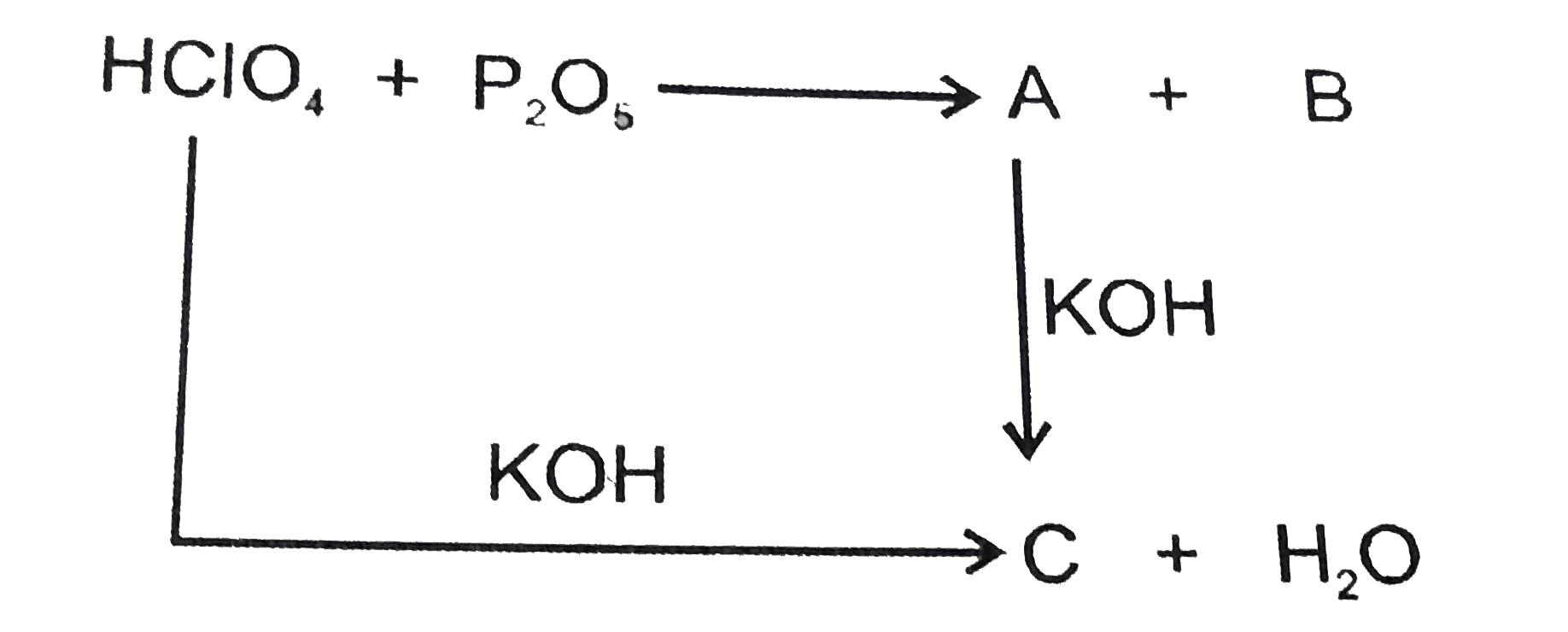Complete Solutions to Example of chapter P BLOCK ELEMENTS of Class 12 book with complete answers and questions
| Class 12 | CHEMISTRY |
| Chapter | P BLOCK ELEMENTS |
| RESONANCE | Example |
| Number Of Questions | 30 |
| Academic Year | 2023-24 |
Arrange the following in the increasing order of the properties stated against them.
(a) (i)`NH_(3)` , (ii)`PH_(3)`, (iii)`AsH_(3)` , (iv)`SbH_(3)`-boiling point.
(b)(i)`Bi^(3+)` ,(ii)`Sb^(3+)` , (iii)`As^(3+)`-stability of `+3` oxidation state.
( c)(i)`NH_(3)`, (ii)`PH_(3)` , (iii)`AsH_(3)` , (iv)`SbH_(3)` , (v)`BiH_(3)`-reducing character.10:12View Solution`NH_(3)+O_(2)overset("Pt")to(A)`
`(A)+O_(2)to (B)`(brown fumes)
`(B)+H_(2)o to ( C)`(nitrogen in lower oxidation state) `+(D)`(nitrogen in higher oxidation state)
`( C)` and `(D)` both are oxoacids of nitrogen.
`( C)+I^(-)to (E)` (violets vapours).
Identify `(A),(B),( C),(D)` and `(E)`03:52View SolutionWhy `NH_(3)` gas cannot be dried by passing over `P_(2)O_(5),CaCl_(2)` and `H_(2)SO_(4)` ?
02:53View SolutionExplain the high reactivity of white phosphorus as compared to red phosphorus.
05:21View SolutionWhat happens ?
(a)When phosphine is heated at `150^(@)C`.
(b)When phosphine is dissolved in water in presence of light.01:48View Solution`P_(4)+NaOH undeset("warm")` to Products.
Explaine the reducing character of one of the products obtained by taking the example of copper sulphate.03:13View SolutionIdentify the group `16 (VI A)` element that fits each of the following description is:
(a)the most electronegative
(b)semimetal
( c)radioactive
(d)the most abundant element in the earth's crust.02:44View SolutionGive the names and formulae of the compounds in which sulphur exhibits an oxidation state of
(A)`-2` , (B)`+4` , ( C)`+6`02:03View Solution`O_(3)` is a powerful oxidising agent. Write equation to represent oxidation of
(a)`I^(-)` to `I_(2)` in acidic solution,
(b)sulphur to sulphuric acid in the presence of moisture,02:29View SolutionGive the important applications of `O_(3)`
03:05View SolutionBlack `(A)+H_(2)SO_(4)to (B)"gas"+( C)`
`(B)+(CH_(3)COO)_(2) Pb to (D)` black ppt.
`( C)+K_(3)[Fe(CN)_(6)] to (E)` blue.
`( C)` also decolourilses acidified `KMnO_(4)`.Identify `(A)` to `(E)`04:45View Solution`SO_(2)` and `Cl_(2)` both are used as bleaching agent. What factors cause bleaching ?
02:33View SolutionComplete the following reaction
 04:58View Solution
04:58View SolutionColourless salt `(A)` decolourise `I_(2)` solution and gives white precipitate (change to black) with `AgNO_(3)` solution. `(A)` also produces pink colour with `FeCl_(3)` solution. Identigy `(A)` and explain reactions.
03:49View SolutionCovalent radius of fluorine is 64 pm but the bond length is not equal to 128 pm and that is 143 pm and bond energy is found to be comparable to `I_(2)`.
01:04View SolutionElectron affinity of chlorine is more than F. Inspite of this `F_(2)` is the better oxidising agent . Why ?
01:00View Solution`Br_(2)+underset(HOT)OH^(o+)rarr(A)+(B)`
`(A)+(B)+H^(o+)rarr Br_(2)`
(A) gives yellow precipitate with `AgNO_(3)`. (A) and (B) are02:15View Solution(a)When HCI reacts with finely powdered iron , it forms ferrous chloride and not ferric chloride. Why ?
(b) Chlorine water tuns blue litmus red but solution becomes colourless after sometime.02:25View Solution`CaOCl_2` in aqueous solution changes to `CI_2` . What is the type of this change ?
01:14View SolutionIdentify A , B and C in the following
 01:33View Solution
01:33View SolutionWhich of the following is a mixed anhydride
(A)`P_4O_10` , (B)`SO_3` , ( C)`Cl_2O_6` , (D)`SO_2`00:58View SolutionGive appropriate reasons for each of the following :
(a)Addition of `Cl_2` to Kl solution gives a brown colour but excess of `Cl_2` turns it colourless
(b)Perchloric acid is a stronger acid than sulphuric acid.
( c)HI can not be prepared by heating Nal with concentrated `H_2SO_4`02:05View SolutionThe correct order of pseudohalide , polyhalide and interhalogen are :
(A)`BrI_2^-,OCN^(-),IF_5` , (B)`IF_5,BrI_2^-,OCN^(-)` , ( C)`OCN^(-),IF_5,BrI_2^(-)` , (D)`OCN^(-),BrI_2^(-),IF_5`01:38View SolutionName the noble gas which
(A)is most abundant in atmosphere , (B)has least boiling point.01:22View SolutionWhat is the utility of the clatherate compunds ?
01:18View SolutionDoes the hydrolysis of `XeF_4` at `-80^(@)C` lead to a redox reaction ?
01:16View SolutionIdentify [A][B] and [C] and gives the complete chemical reactions involved.
 01:21View Solution
01:21View SolutionComment on the following.
(a)Electrolysis of ICN in pyridine solution.
(b)Iodine dissolves in oleum
( c)Electrical conductivity of molten iodine02:43View SolutionWhy anhydrous HF liquid is not electrolysed alone to get `F_2` ?
01:38View SolutionWhich of the following products is/are obtained in the following reaction
`KBrO_3+F_2+KOH to` products01:01View Solution
Example questions and complete solutions for chapter P BLOCK ELEMENTS of PHYSICAL, INORGANIC, AND ORGANIC CHEMISTRY of Class 12
All Exercises from RESONANCE Class 12 CHEMISTRY P BLOCK ELEMENTS
- ALP EX #3 OBJECTIVE
- ALP PART OBJECTIVE
- ALP PART 1 Comprehension # 1 OBJECTIVE
- ALP PART 1 Comprehension # 1 SUBJECTIVE
- ALP PART 1 Comprehension # 2 OBJECTIVE
- ALP PART 1 Comprehension # 3 OBJECTIVE
- ALP PART 1 OBJECTIVE
- ALP PART 1 OBJECTIVE Assertion/ Reasonig
- ALP PART 1 SUBJECTIVE
- ALP PART 2 OBJECTIVE
- ALP PART CBSC- III SUBJECTIVE
- ALP PART II AIEEE OBJECTIVE
- ALP PART II SUBJECTIVE
- ALP PART IV : Comprehension
- B.L.E
- Example
- Exercise 1 part 2 objective que
- Exercise 1 part 3 ASSERTION/REASONING
- Exercise 1 part 1 subjective ques
- Exercise 1 part-1
- Exercise 1 part-2
- Exercise 1 part-3
- Exercise 2 part 1 SUBJECTIVE
- Exercise 2 part 2 OBJECTIVE
- Exercise 2 part-1
- Exercise 2 part-2
- Exercise 2 part-3
- Exercise 3 part-1
- Exercise 3 part-2
- Exercise 3 part-3
- INORGANIC CHEMISTRY(P-Block Elements)
- PART -II
- PART -III : Match the column
- SINGLE CHOICE TYPE
